Papua New Guinea is considered the furthest point reached by modern humans after leaving Africa. Its inhabitants are said to possess some of the oldest strains of modern DNA outside of Africa.
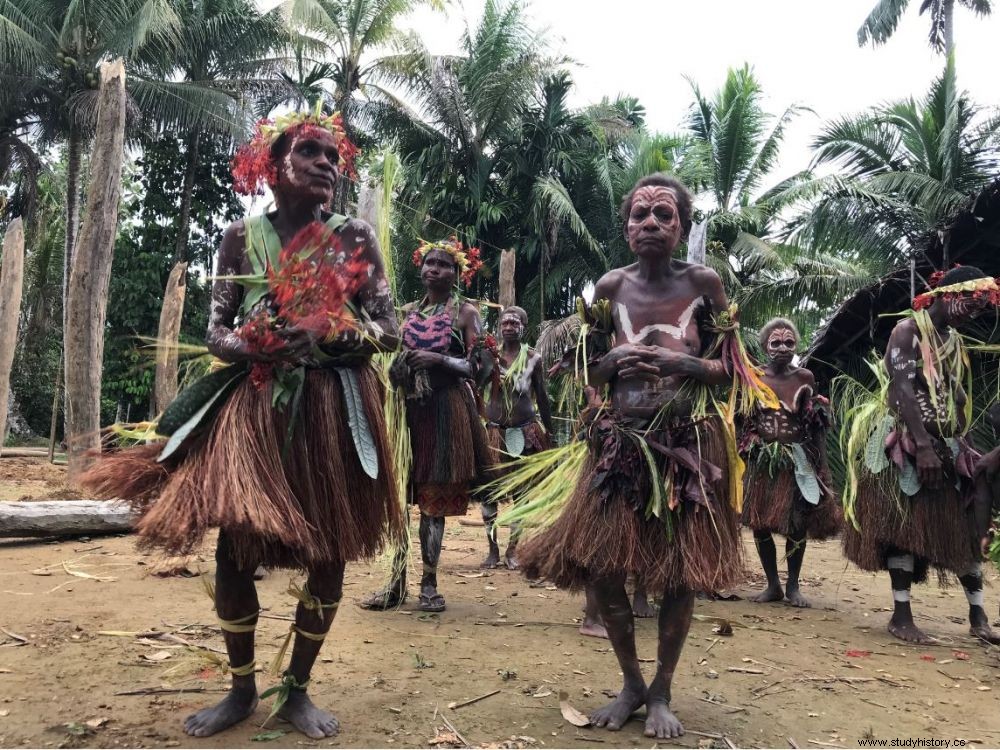
Residents of the village of Awin, Papua New Guinea (PNG), during a traditional ceremony.
"We need to look further east" , said François Xavier-Ricaut, of the Evolution and Biological Diversity Laboratory, UMR 5174 (CNRS), of the University of Toulouse III-Paul Sabatier, when he began in 2016 the Papuan past project* (Archaeology and genetics in Papua New Guinea), a study project concerning the first human settlements of Melanesia, one of the large groups of islands in Oceania.
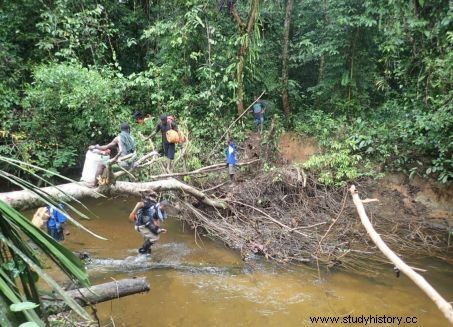
Scientific research carried out under difficult conditions. Credit:Papuan Past Project
After seven years spent in Borneo, the young geneticist convinced himself that it was there, in this part of the world, that we would understand how the first humans dispersed 60/50,000 years ago, after their exit from 'Africa. When New Guinea, Australia and Tasmania formed a single megacontinent called Sahul. Isolated from the rest of the world for thousands of years, these populations have above all preserved a genetic treasure in the heart of their cells. As with the Aborigines of Australia, and certain so-called "relic" populations like the indigenous groups of the Andaman Islands or others of the Philippines, 5% to 6% of the genome of the inhabitants of Papua comes from hybridizations, interbreeding with other Homo species crossed on their migration route since their dispersion outside Africa.
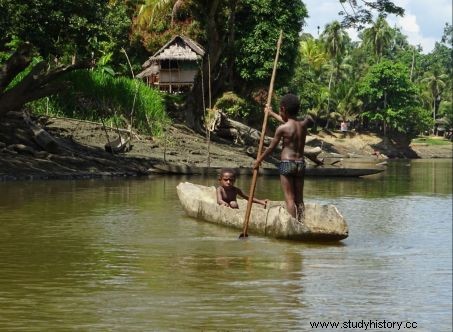
Children on the Arefundi River, Papua New Guinea (PNG). Credit:Papuan Past Project
The Papuan genome, a memory of humanity
" But if Europeans have 2% to 3% of Neanderthal genome, the Papuans who also keep it, also have 5% to 6% of Denisova genome, an extinct Homo species, as well as a small percentage of an unidentified archaic Homo genome !”, declares the scientist. For these populations, the island environments favored genetic drift, and the isolation, the differentiation between the groups of Homo, which led to an exceptional linguistic, genetic and cultural diversity. the largest known. Over 800 languages (20% of the world's languages) have been recorded in Papua New Guinea! A unique linguistic diversity that is reflected in the genetic heritage.
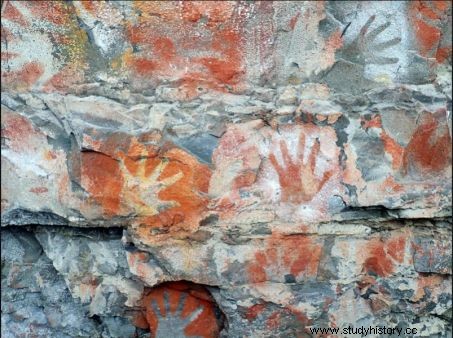
Rock art stencils on rock shelter walls in the Arefundi region of Papua New Guinea. Credit:Papuan Past Project
"Papua is 5 million people, but a genetic diversity equivalent to that found between southern India and Ireland!" , says François Xavier-Ricaut. "What we can very well imagine are Homo sapiens who arrived 60,000 years ago, went from island to island, from environment to environment and encountered other human groups with whom they have interbred, and advancing, have accumulated new genetic variants. The Papuans have an extraordinary genetic heritage that we try to explore, and understand" . To date, the various DNA samples taken from communities in the Highlands and Lowlands of Papua New Guinea, as well as those from the islands of the Bismarck Archipelago, have made it possible to analyze 80 complete genomes, and 120 are in course of treatment in Paris and Australia. Genetic analyzes carried out thanks to the strong participation of local populations in the Papuan Past Project .
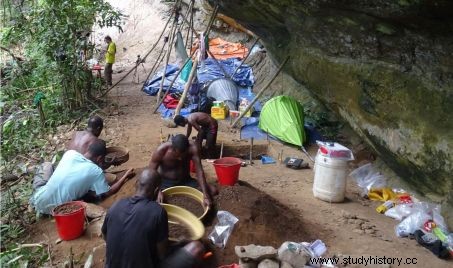
Archaeological excavations carried out as part of the Papuan Past Project. Credit:Papuan Past Project
Like scientists, these inhabitants want to know who their ancestors are and whether they arrived by the northern route, Celebes or even the southern route, Timor and then Australia? To answer all these questions, archaeological excavations are being carried out in parallel with genetic analyses... and the latest results tend to show that at least two different groups arrived in Sahul more than 50,000 years ago. And both routes could have been used.
*Papuan past project
